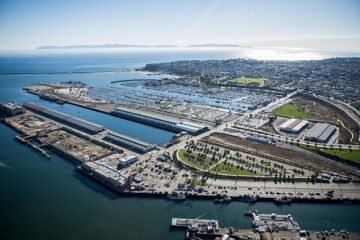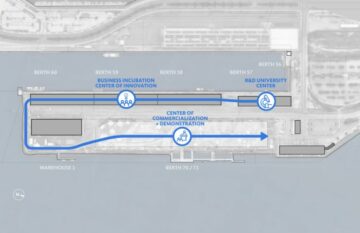Challenge(s)
How can innovation hubs be established in port areas?
Good practice
Innovation and food quality
In addition to the symbolic value of transforming previously abandoned areas into the Port City's most innovative places, transitional spaces between the port and city are good locations for creative districts and innovation hubs in a world where responsiveness, forward-thinking, and flexibility are increasingly necessary. These areas can improve the community's value and create new job opportunities in the blue economy. This concept is what AltaSea is pursuing in the Port of Los Angeles; the initiative has transformed old port facilities into a vibrant science hub.
This good practice also includes objectives 5.2 (Enlarging the mix of profiles and promoting skills transfers, to allow for flexibility and to move beyond the sector-based approach without discrimination) and 8.3 (Developing public spaces and recreational or cultural amenities in Port City interface zones to create an appealing new area) of the AIVP's 2030 Agenda
Case study
The idea behind AltaSea came from Prof. Geraldine Knatz in 2006, when she was Director of the Port. The aim was to transform the 35-acre historic City Dock 1 into a campus to create synergies between scientists, researchers, and businesses, develop innovative solutions in response to climate change, and safeguard the future of oceans and ocean-related careers. AltaSea forges a new relationship with the community, not just by creating jobs but also through various awareness-raising initiatives, educational programmes, and regular meetings with the community. In 2008, a community consultation group was established, but the project was put on hold due to the financial crisis. However, it was revived in 2013 when the Municipal Council approved a 50-year lease to redevelop the former Dock 1. The lease agreement between the Port and a financial sponsor (Rockefeller Philanthropy Advisors) included funds for the regeneration of the site.
AltaSea became a stand-alone non-profit corporation in 2014, with a Board of Trustees including local authorities, business leaders, academics, and philanthropists. The campus project was designed by the architecture firm Gensler in 2016 and will be developed in phases over a 15 to 20-year period. In December 2017, work began on the La Kretz Blue Economy Incubator in warehouse 58. Furthermore, a partnership with the Boys and Girls Clubs of Los Angeles Harbor, Ocean Exploration Trust, and Los Angeles Maritime Institute started offering STEM classes for middle and high schoolers in the same year.
In 2020, the group launched the Blue Project, which provides online educational resources to encourage students to pursue jobs in the Blue Economy sector. The project offers students various opportunities, such as live chats with ocean educators, summer volunteer programs, and college internships. In addition, it creates a platform for students to voice their opinions on protecting the ocean’s ecosystem. It provides resources to address climate change, energy supply, and food security challenges. Moreover, Altasea keeps creating spaces for scientific research while preserving heritage. In 2023, the entity received funds from the government of California and the Port of Los Angeles to redevelop three berths into a 35-acre campus. The space includes berth 58, which is already in use, and berths 59 and 60, which are located across from the historic warehouse 1.
Additional information :
https://www.gensler.com/projects/altasea
https://altasea-project-blue.org/




